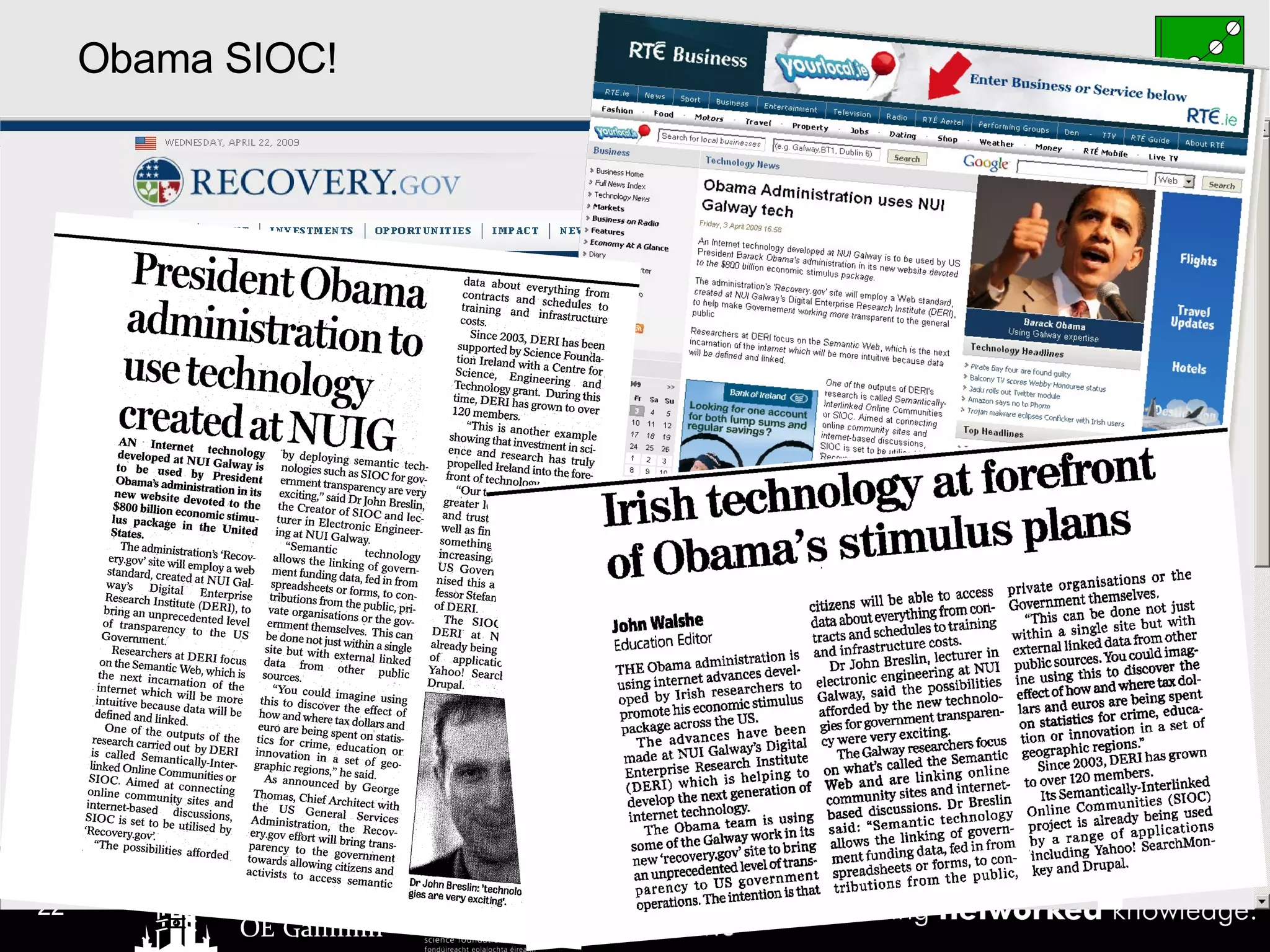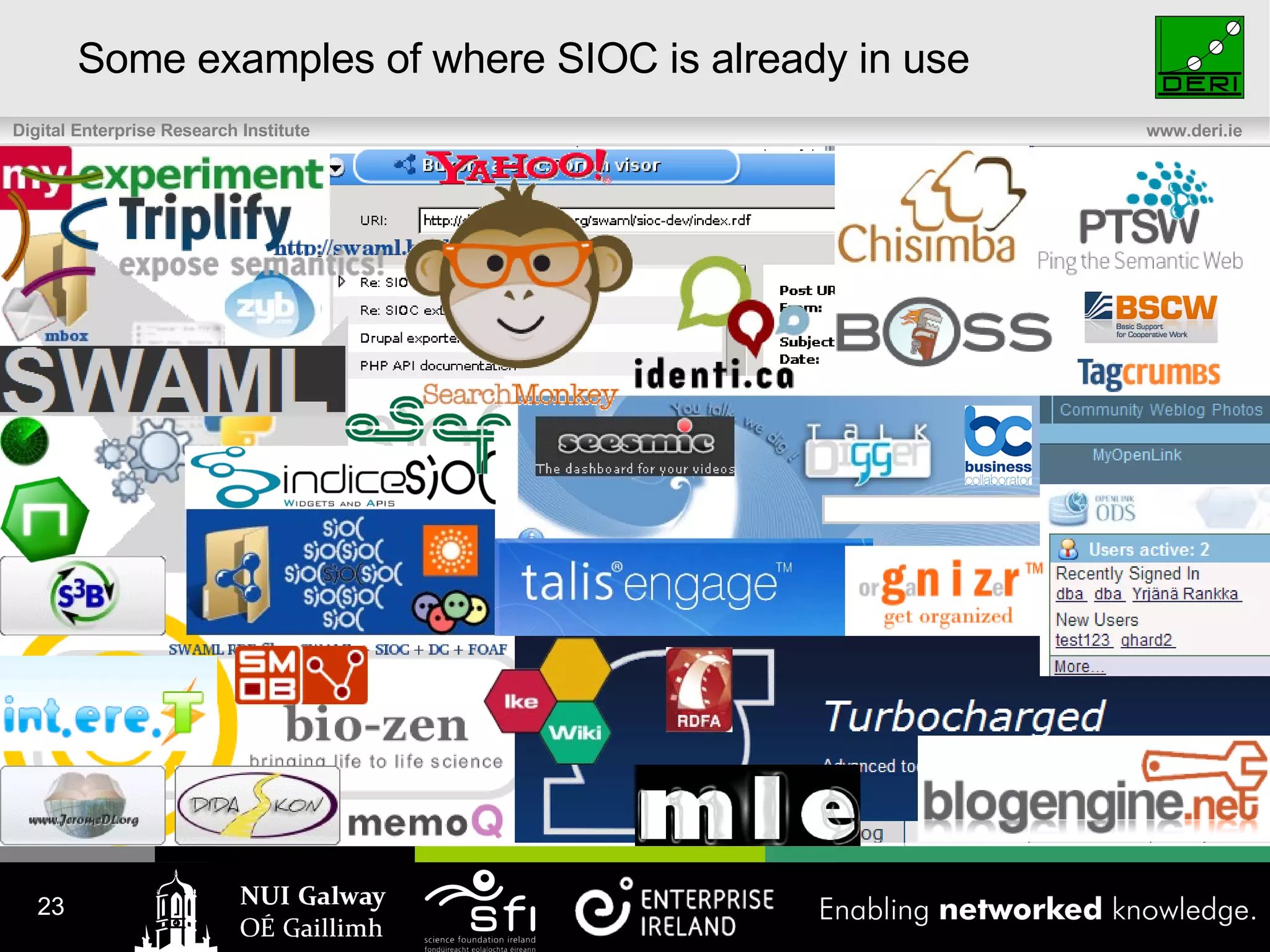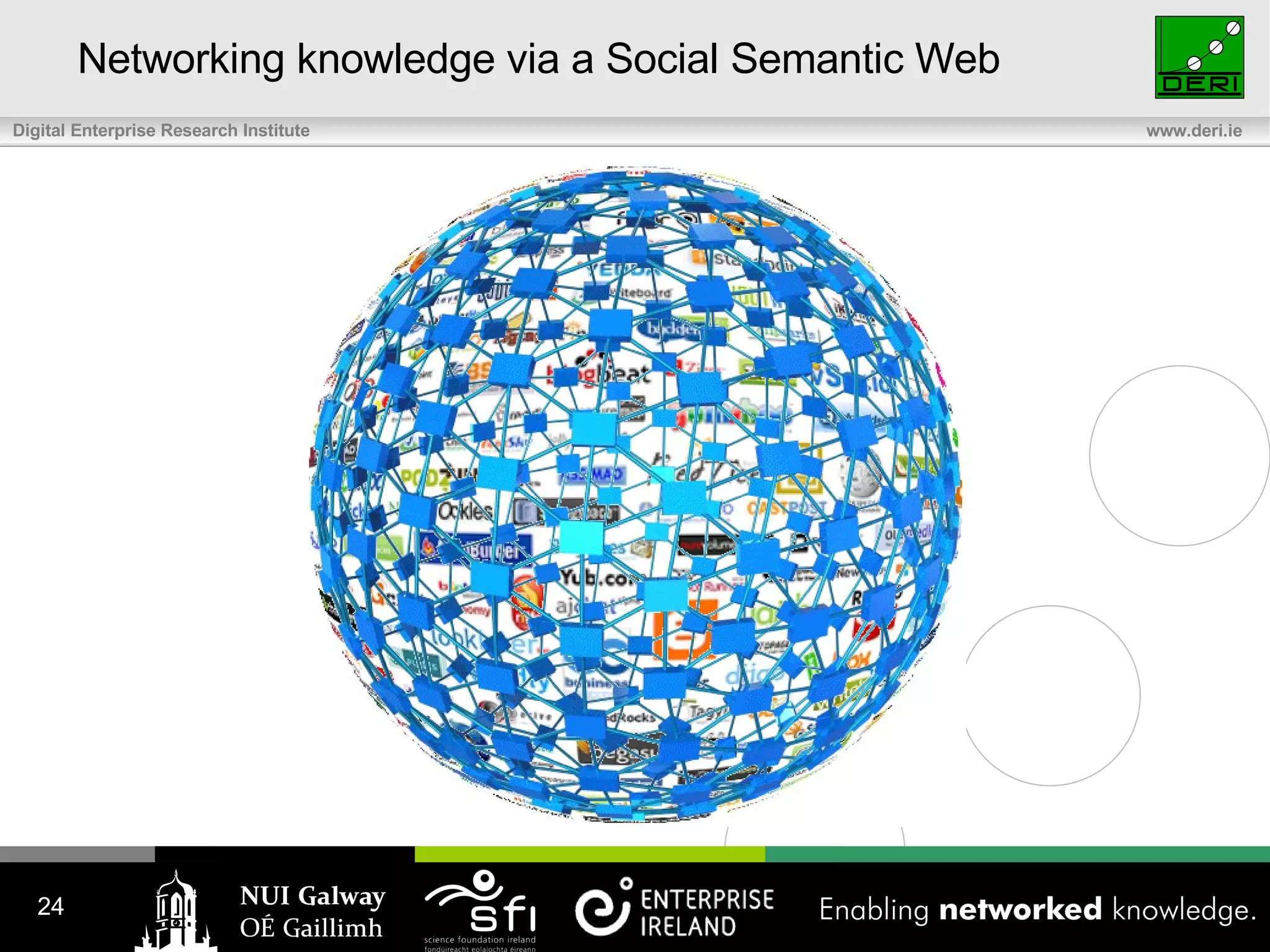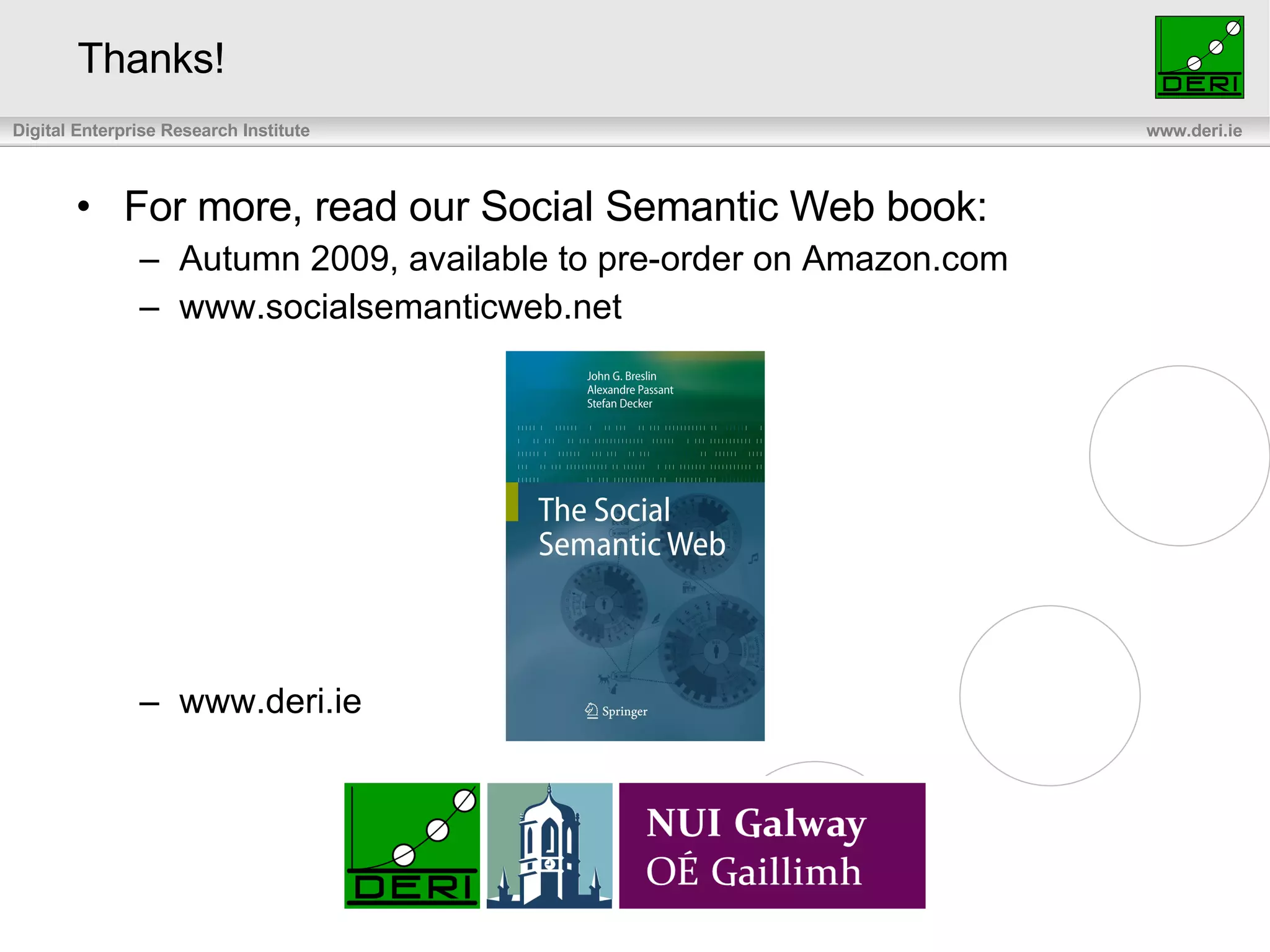1. The document discusses DERI, a research institute focused on the semantic web and social semantic web.
2. It describes DERI's work developing the SIOC ontology to represent data from social websites on the semantic web in a standardized and interoperable way.
3. The SIOC ontology aims to connect users and data across different social/collaborative websites and allow users to easily move between sites while bringing their data.
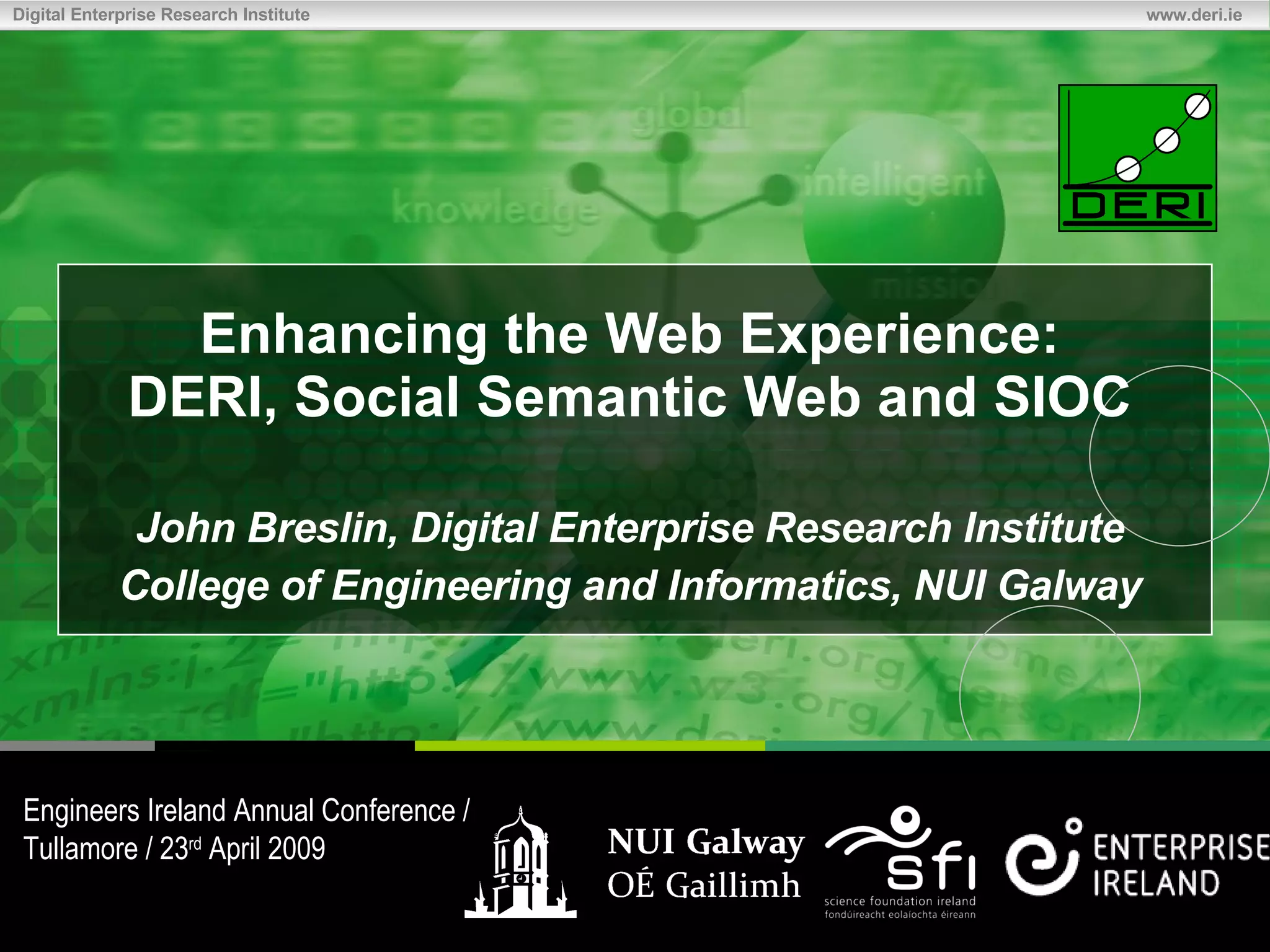
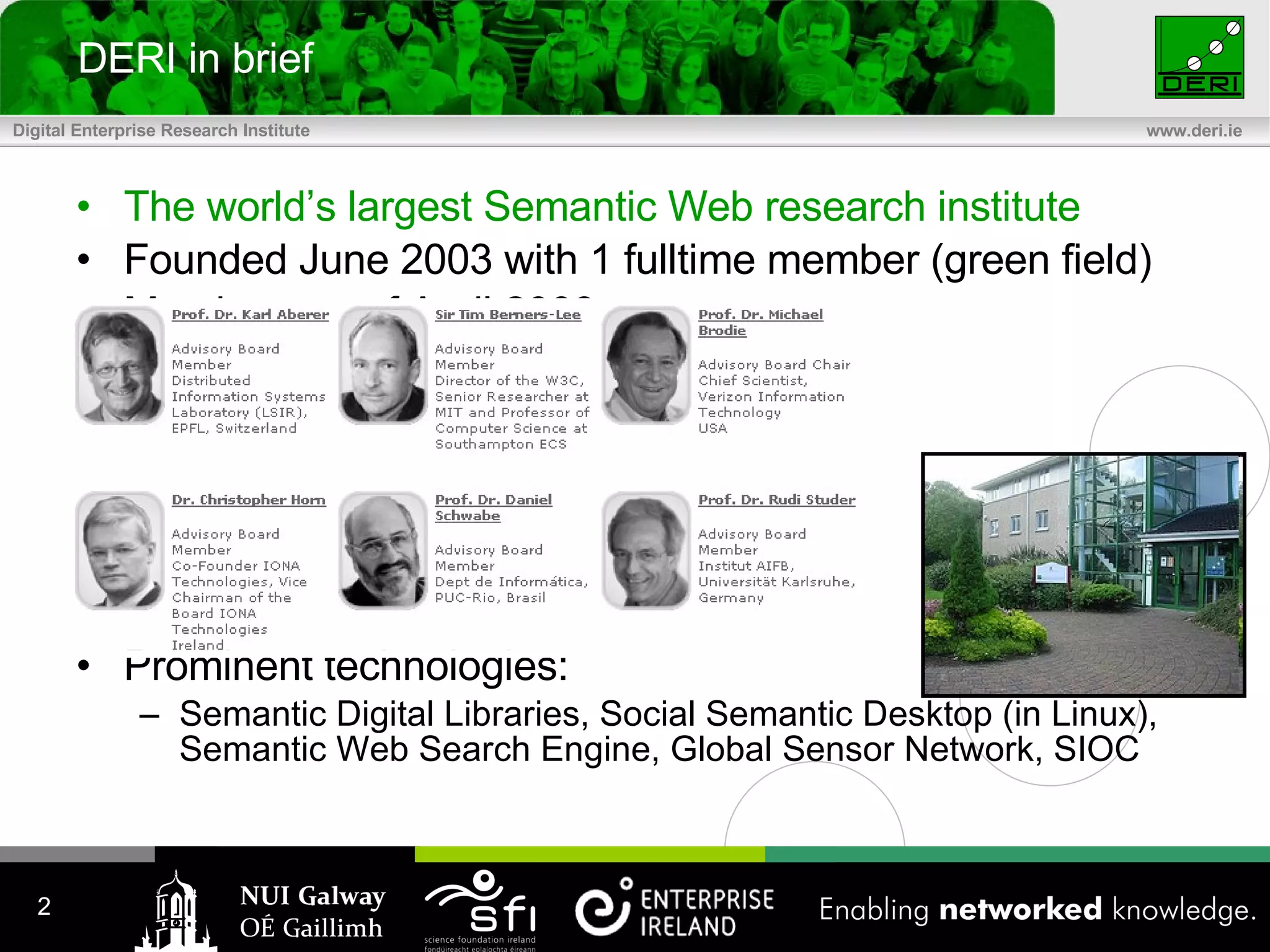
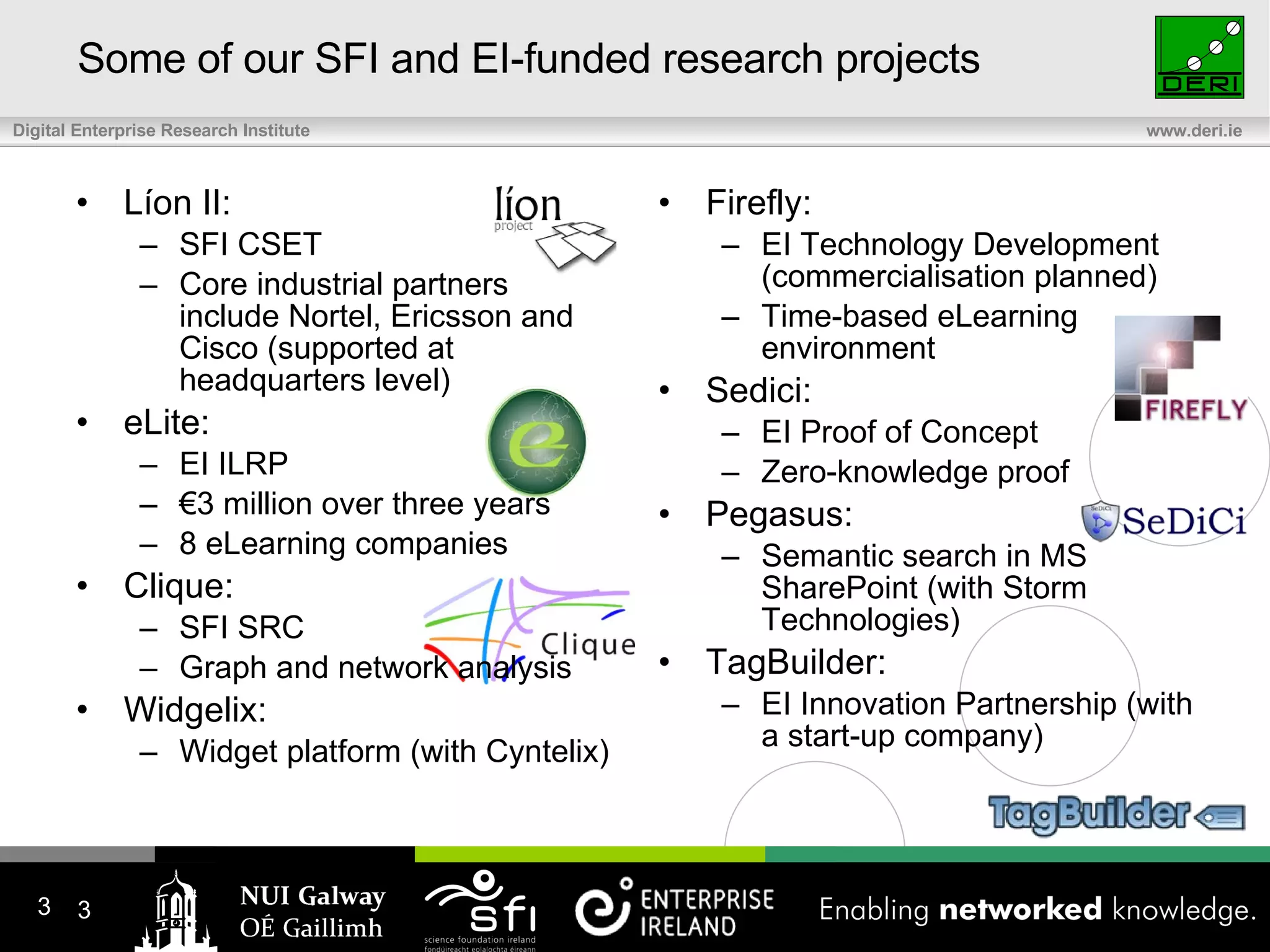
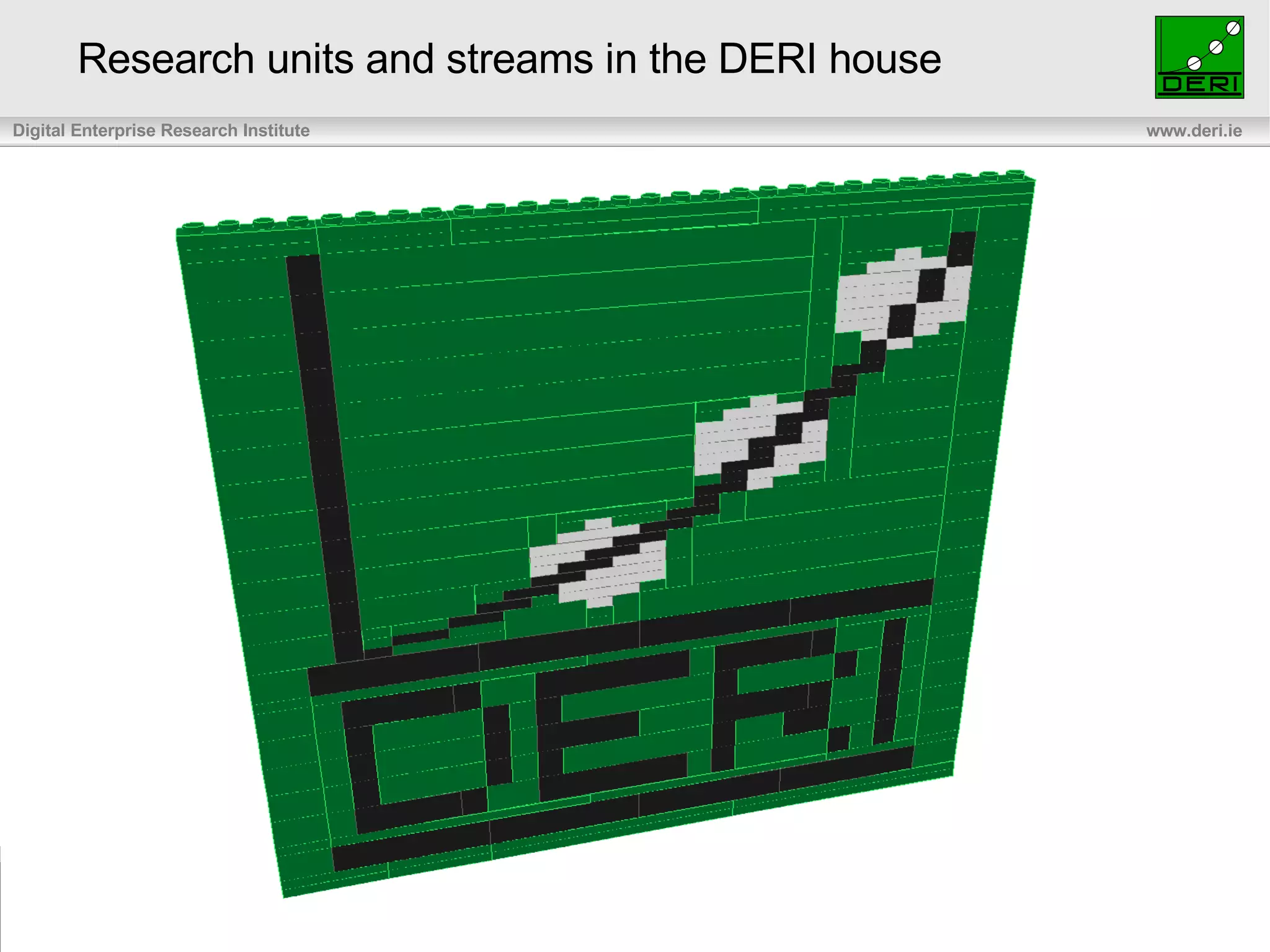
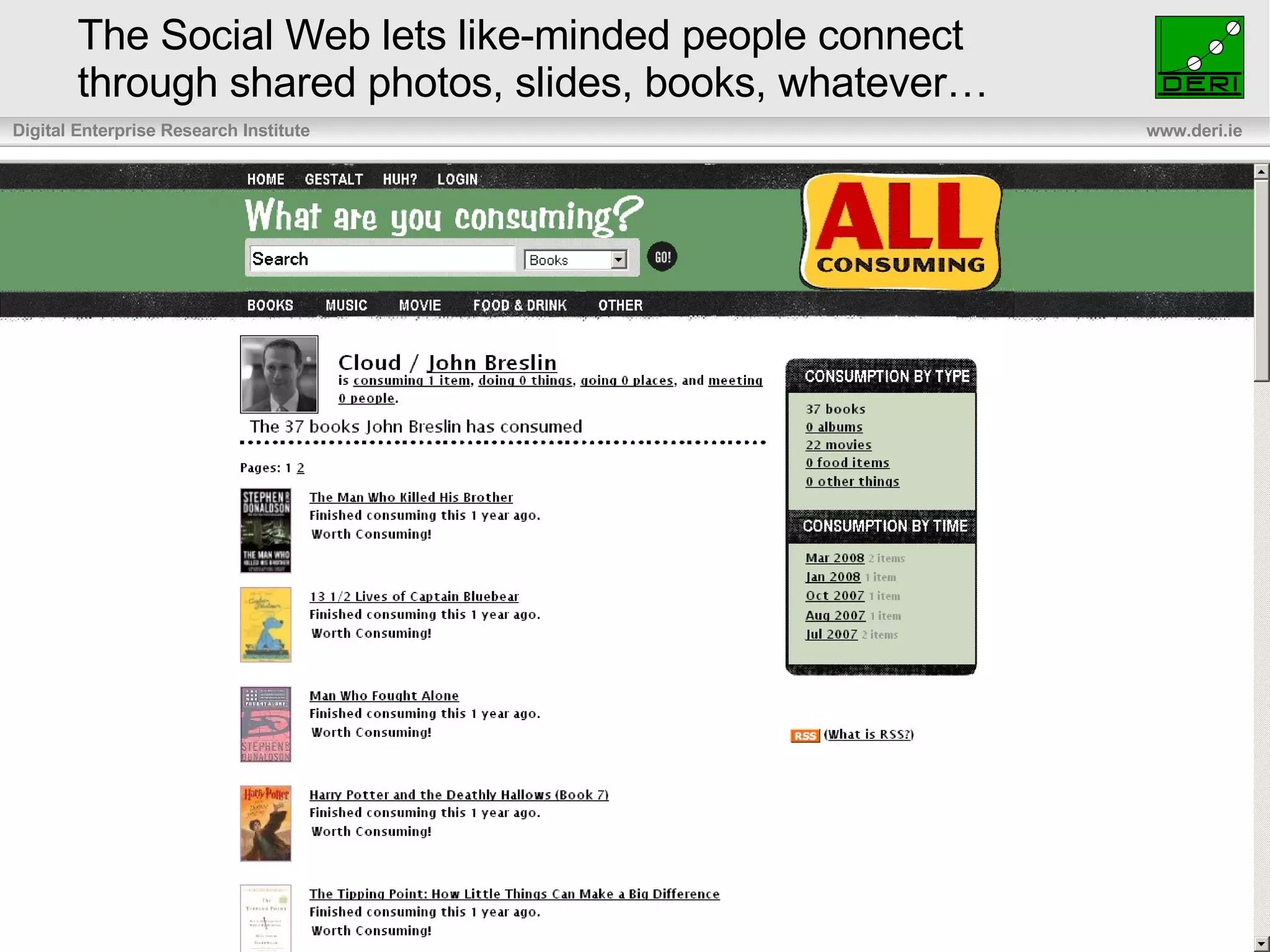
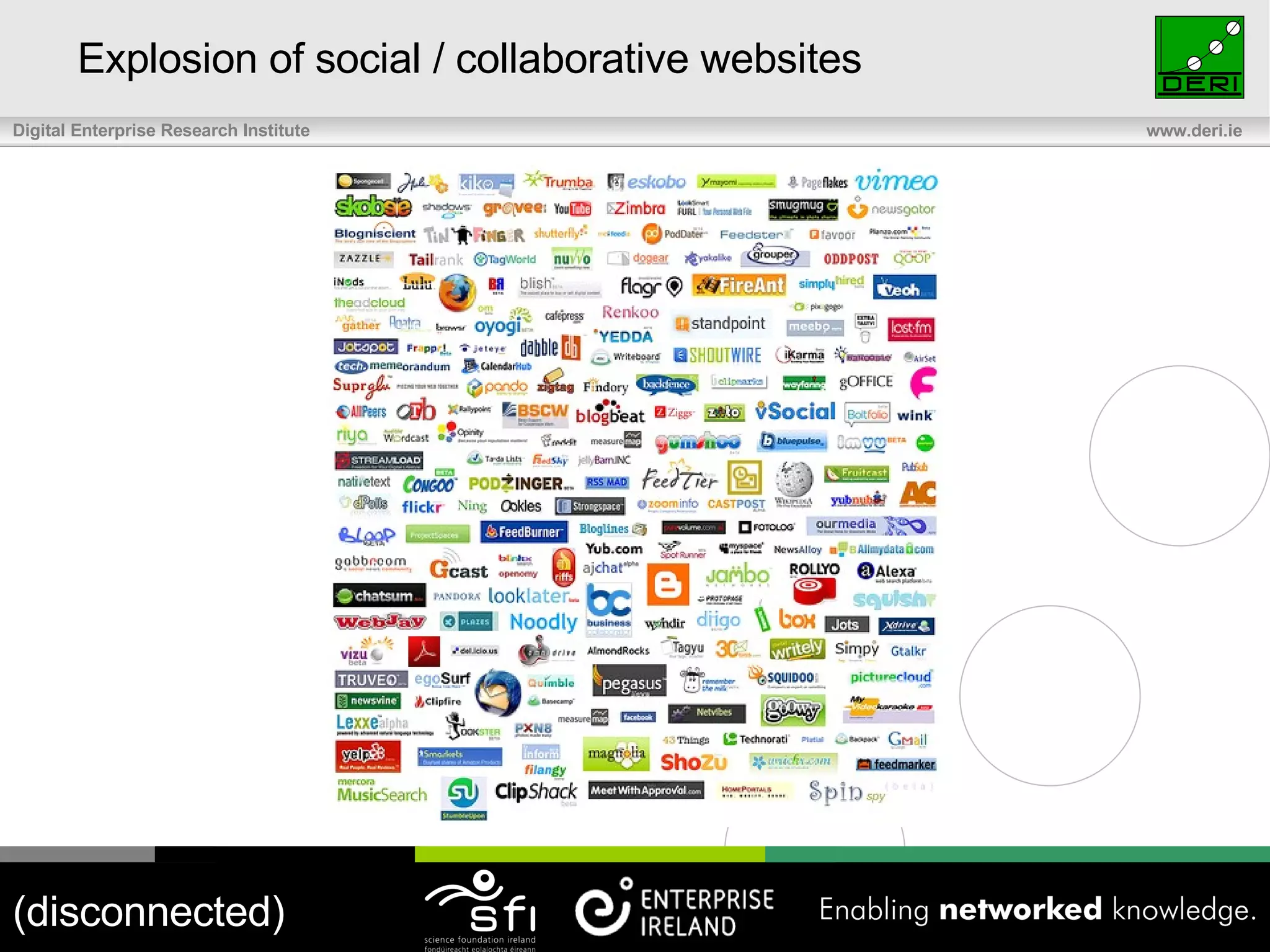
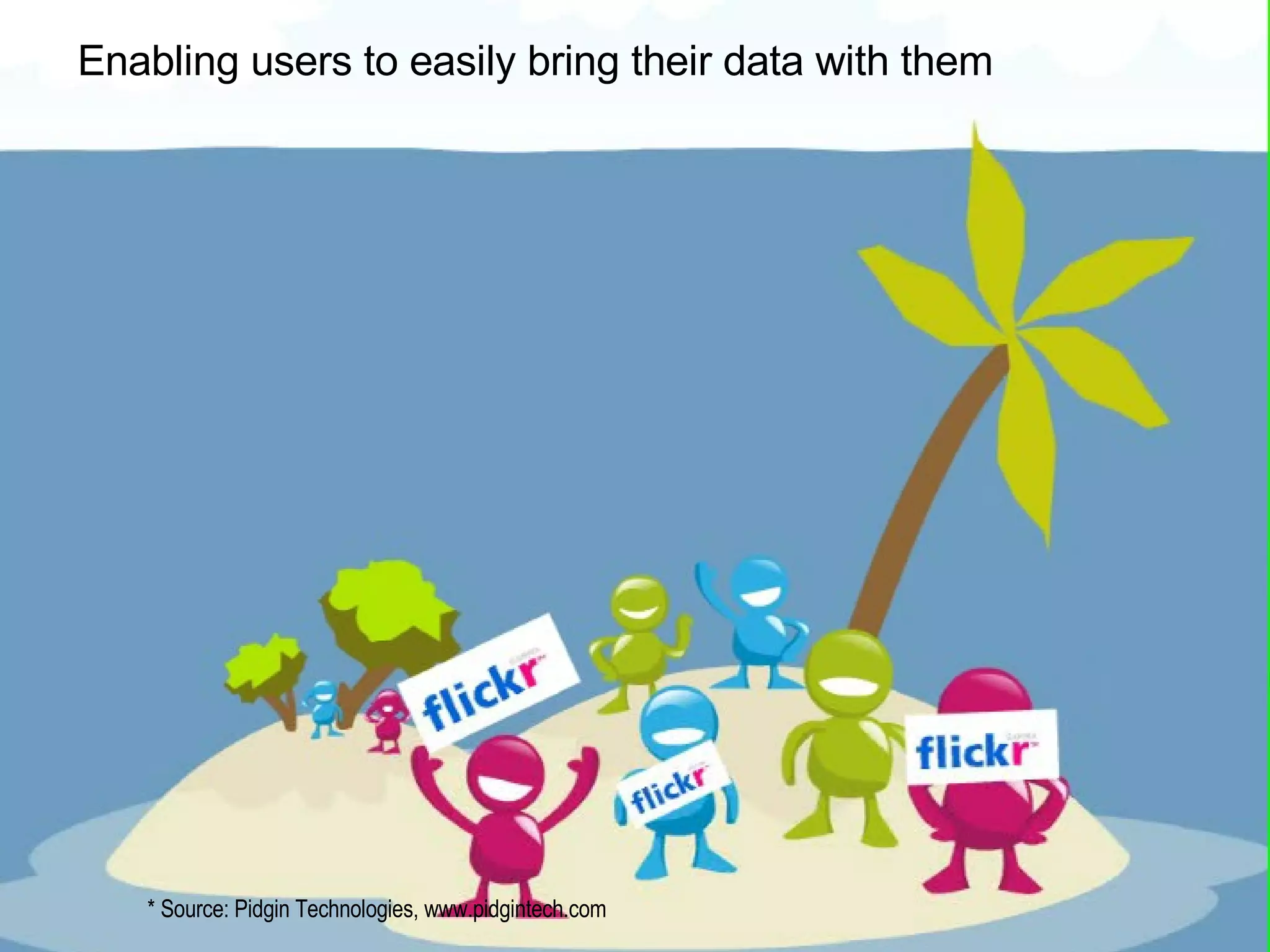
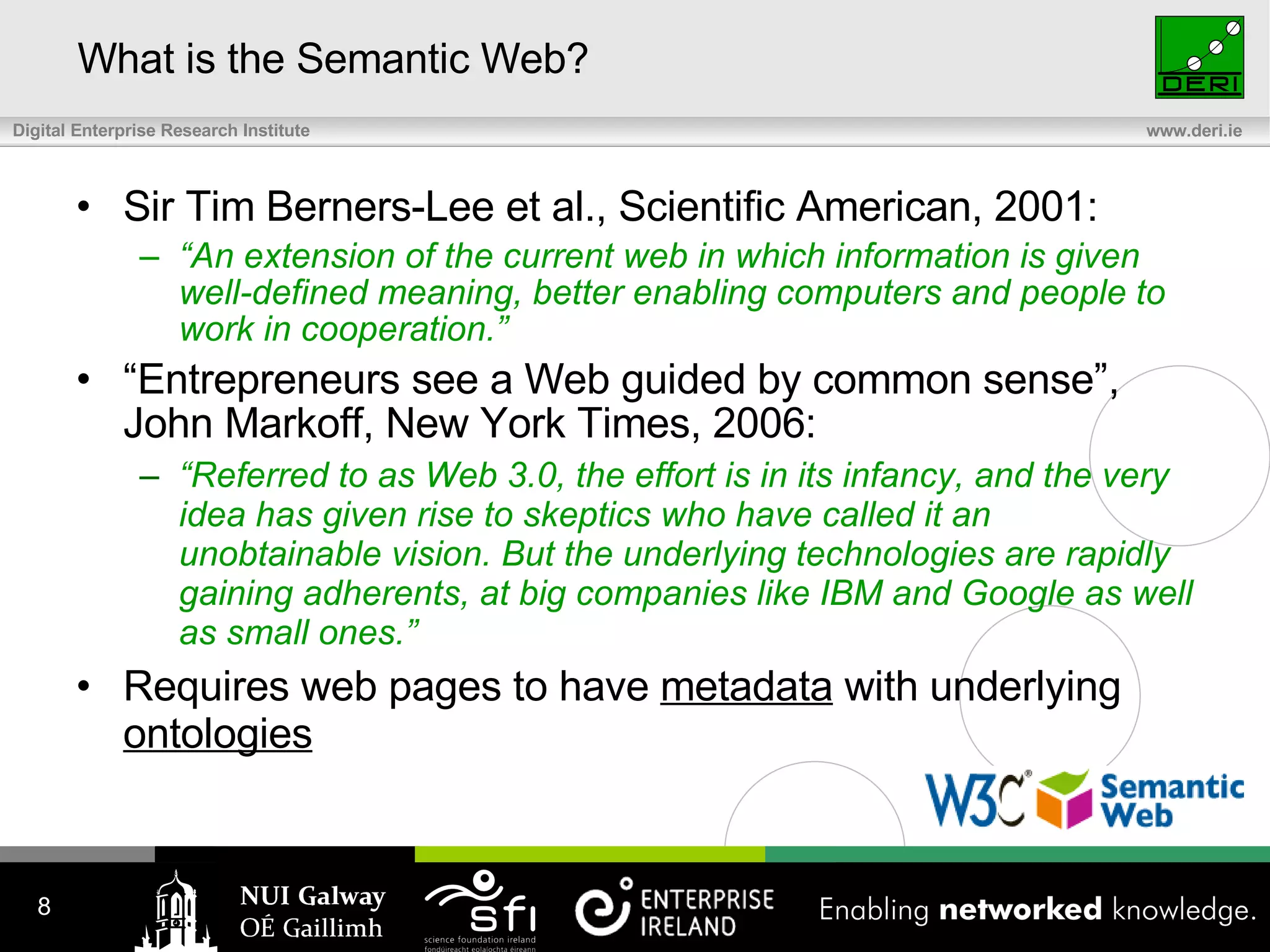
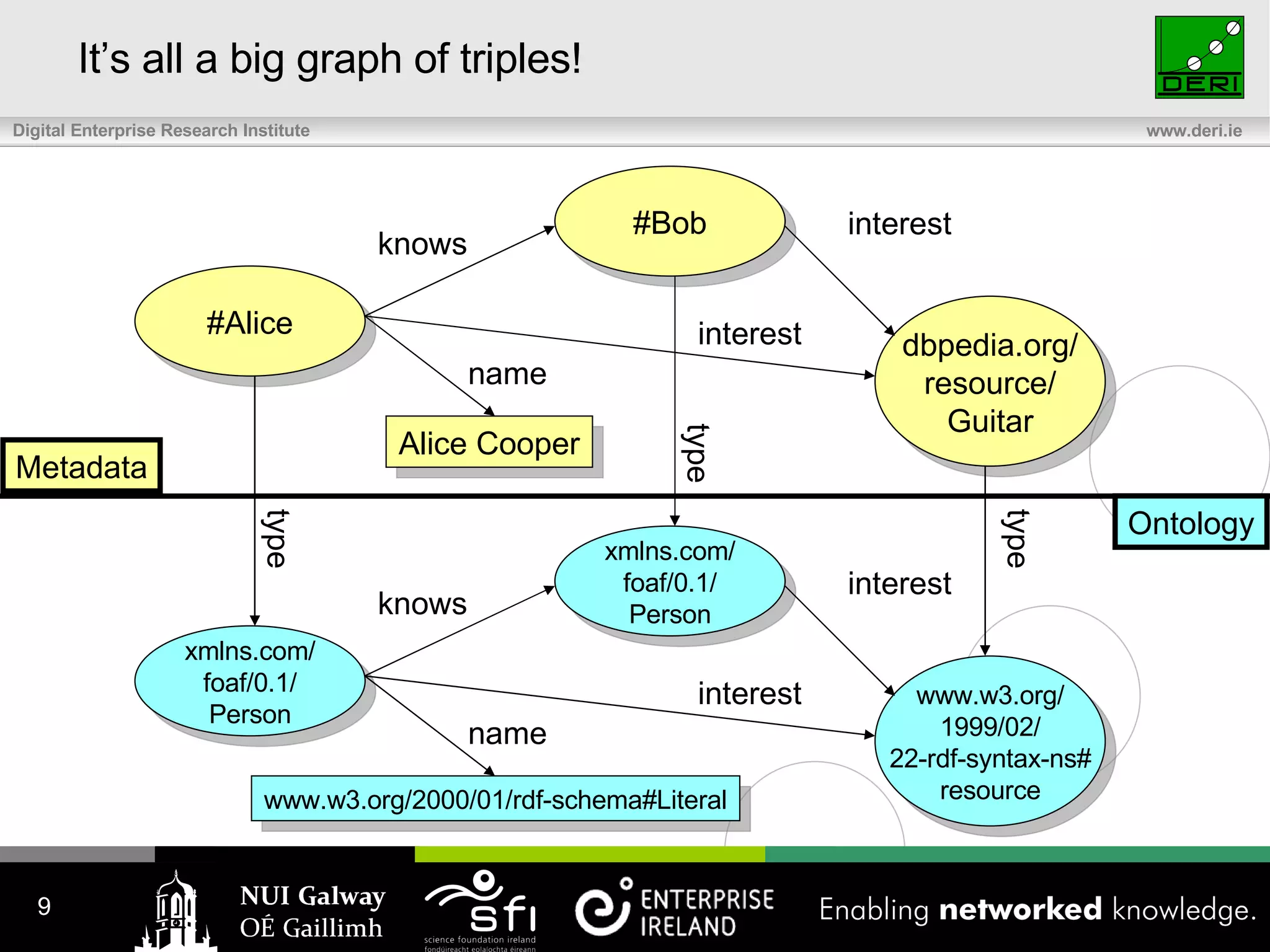
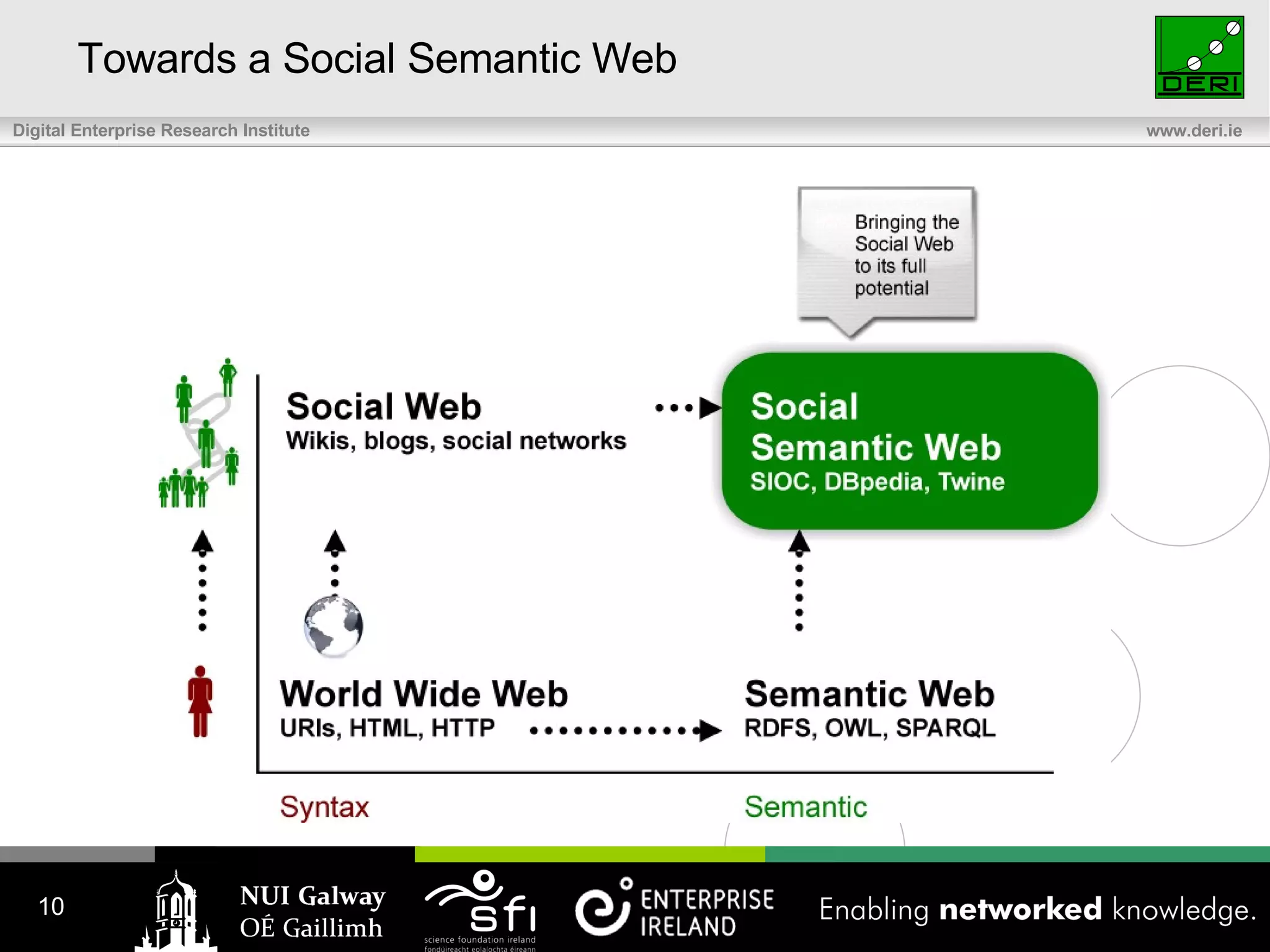
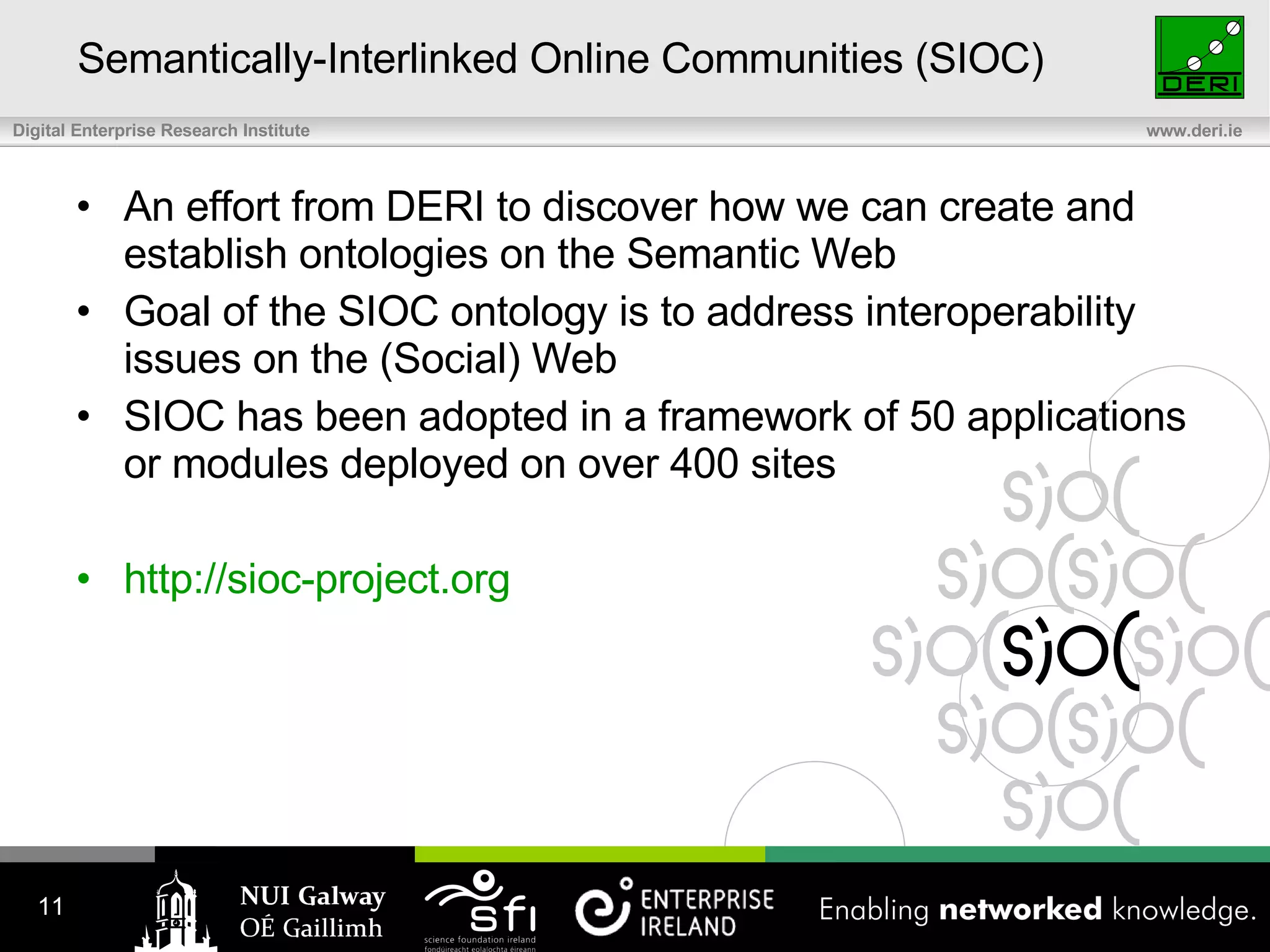
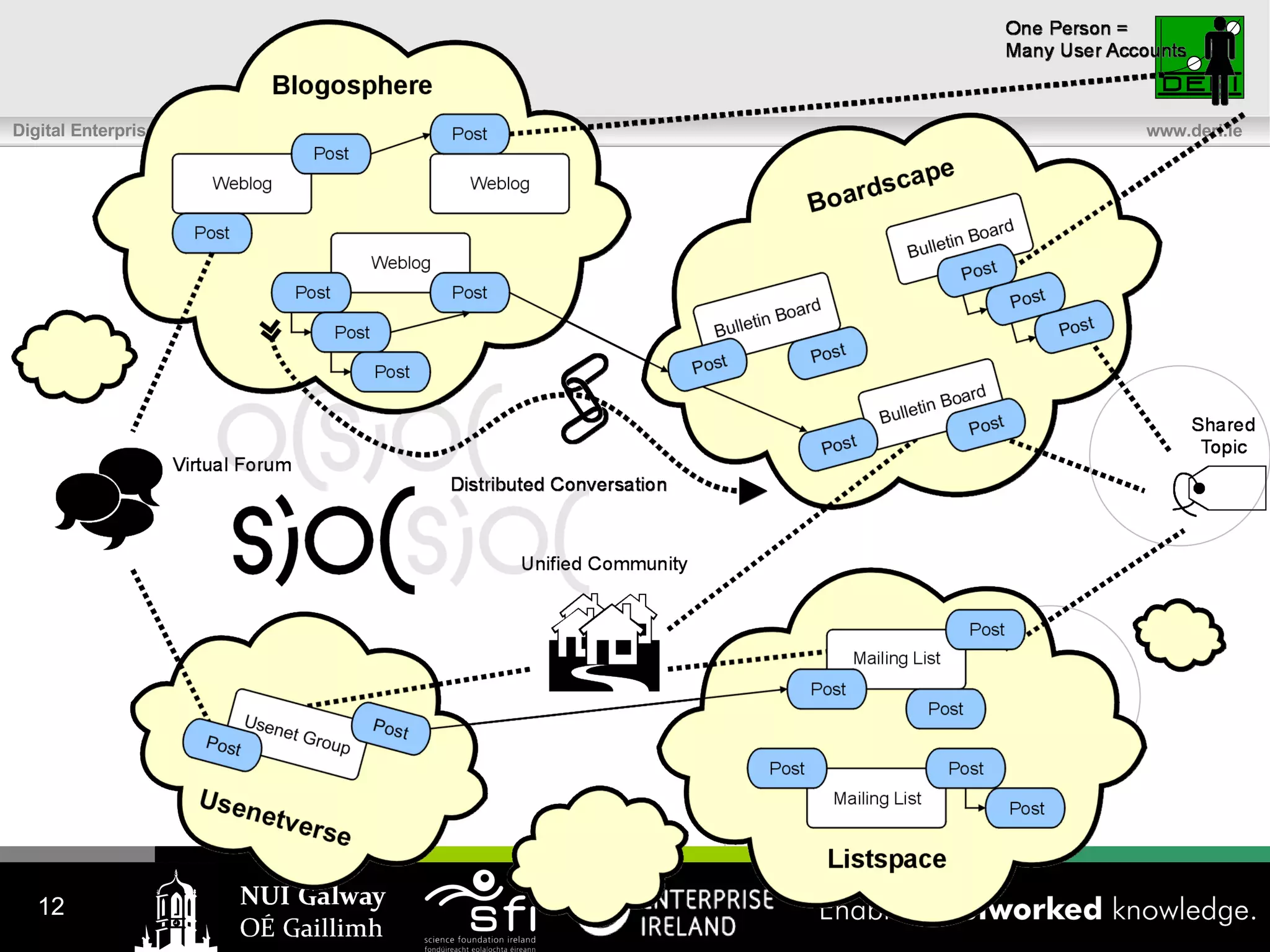
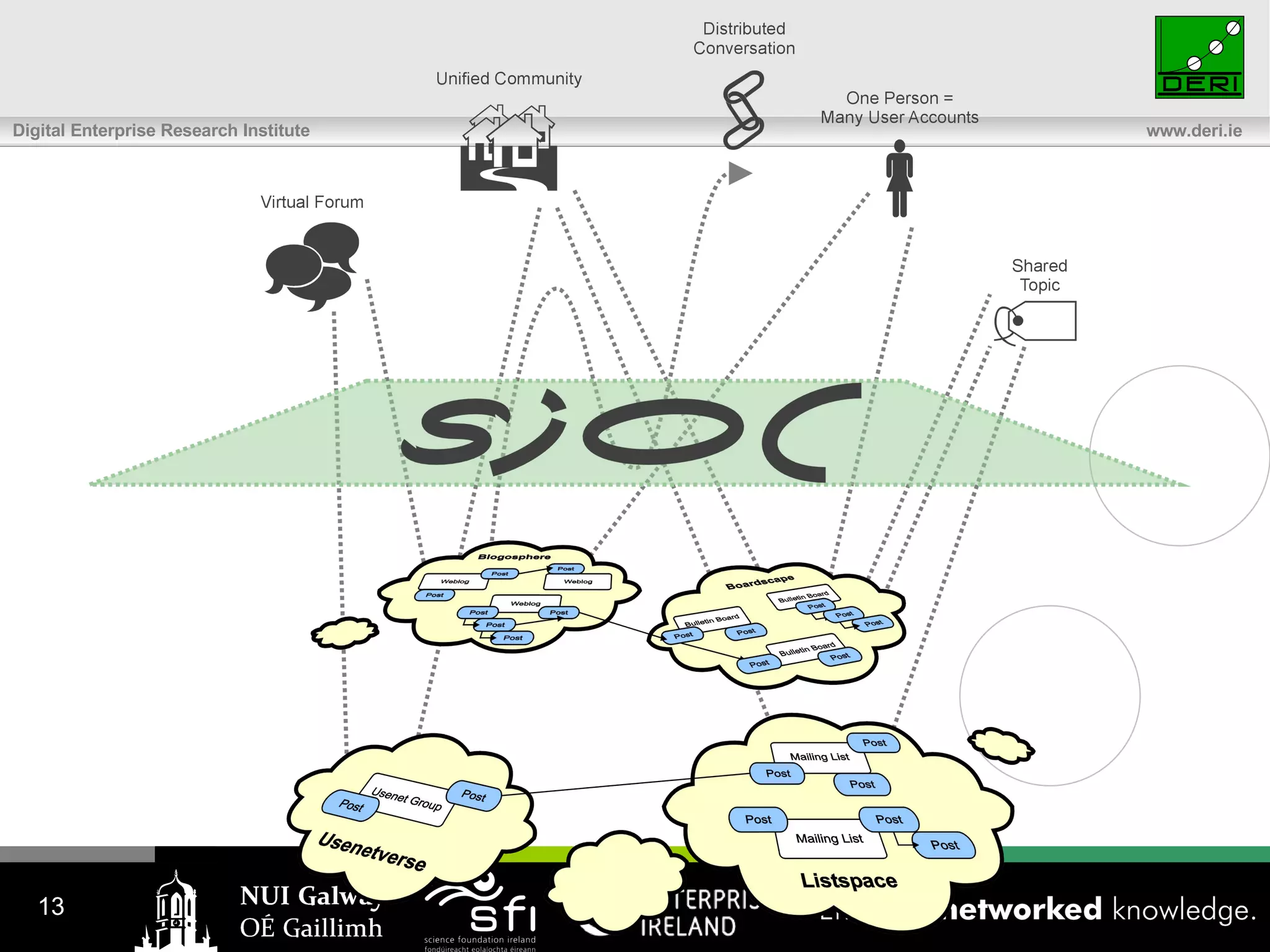

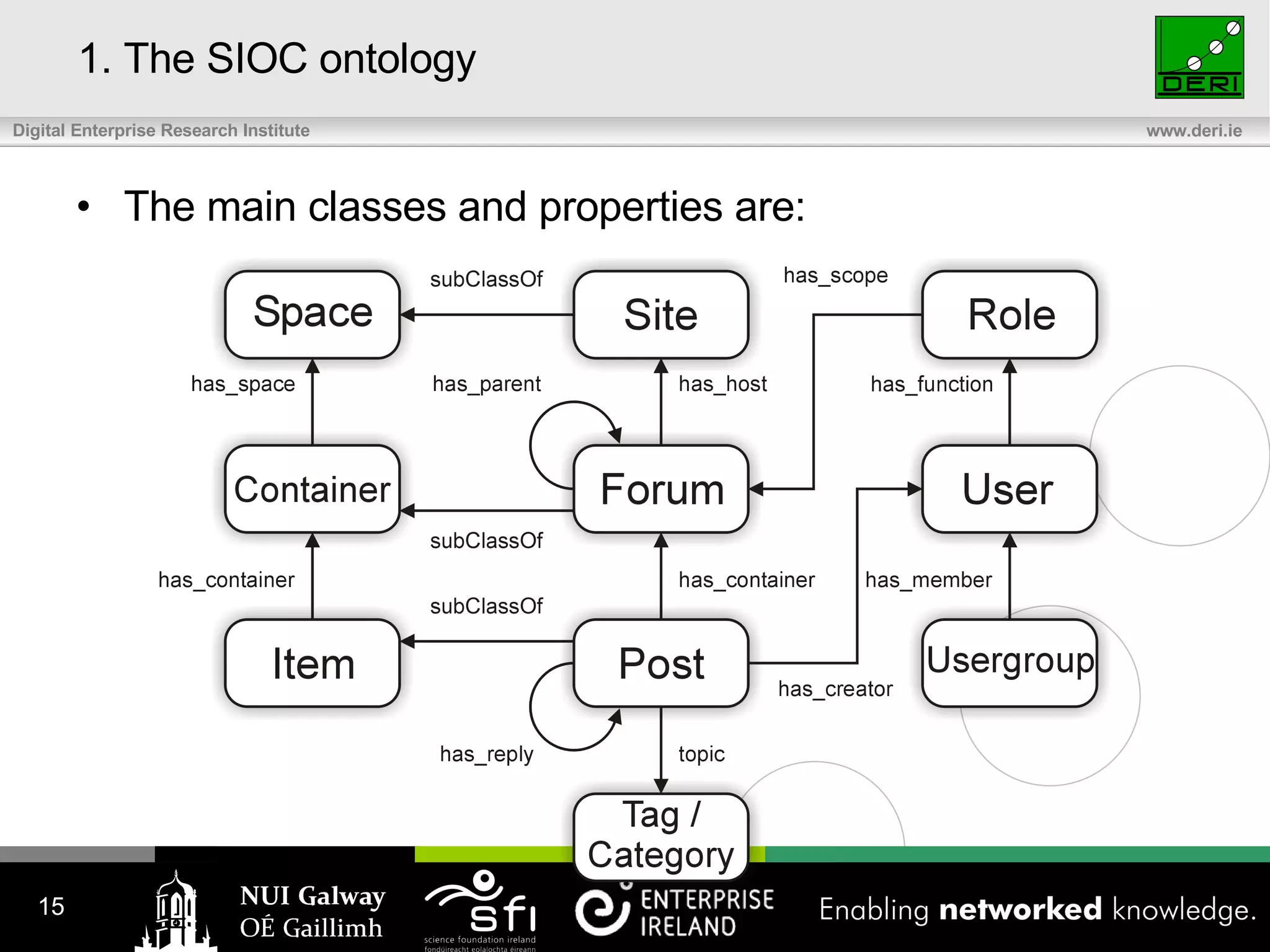
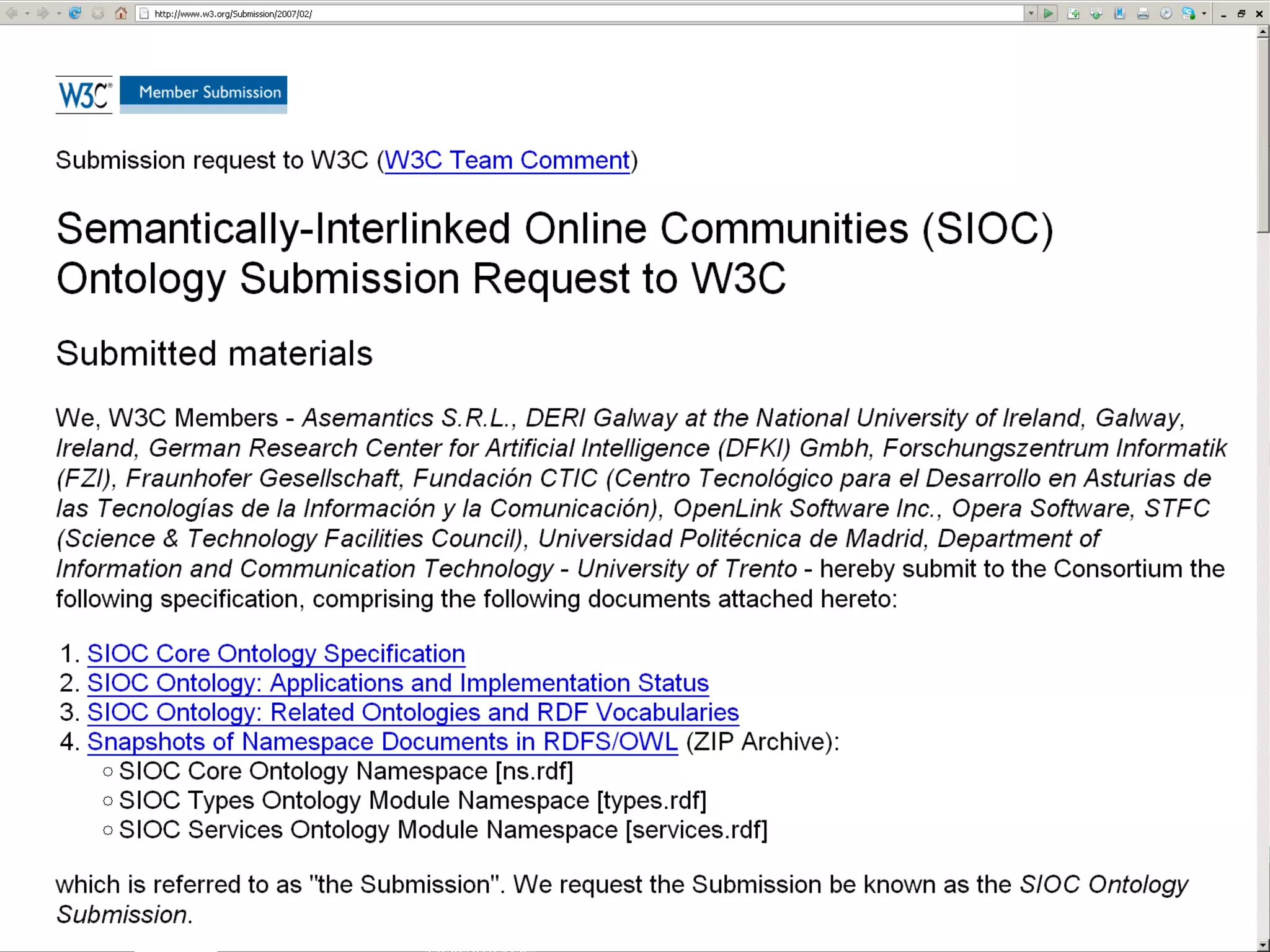
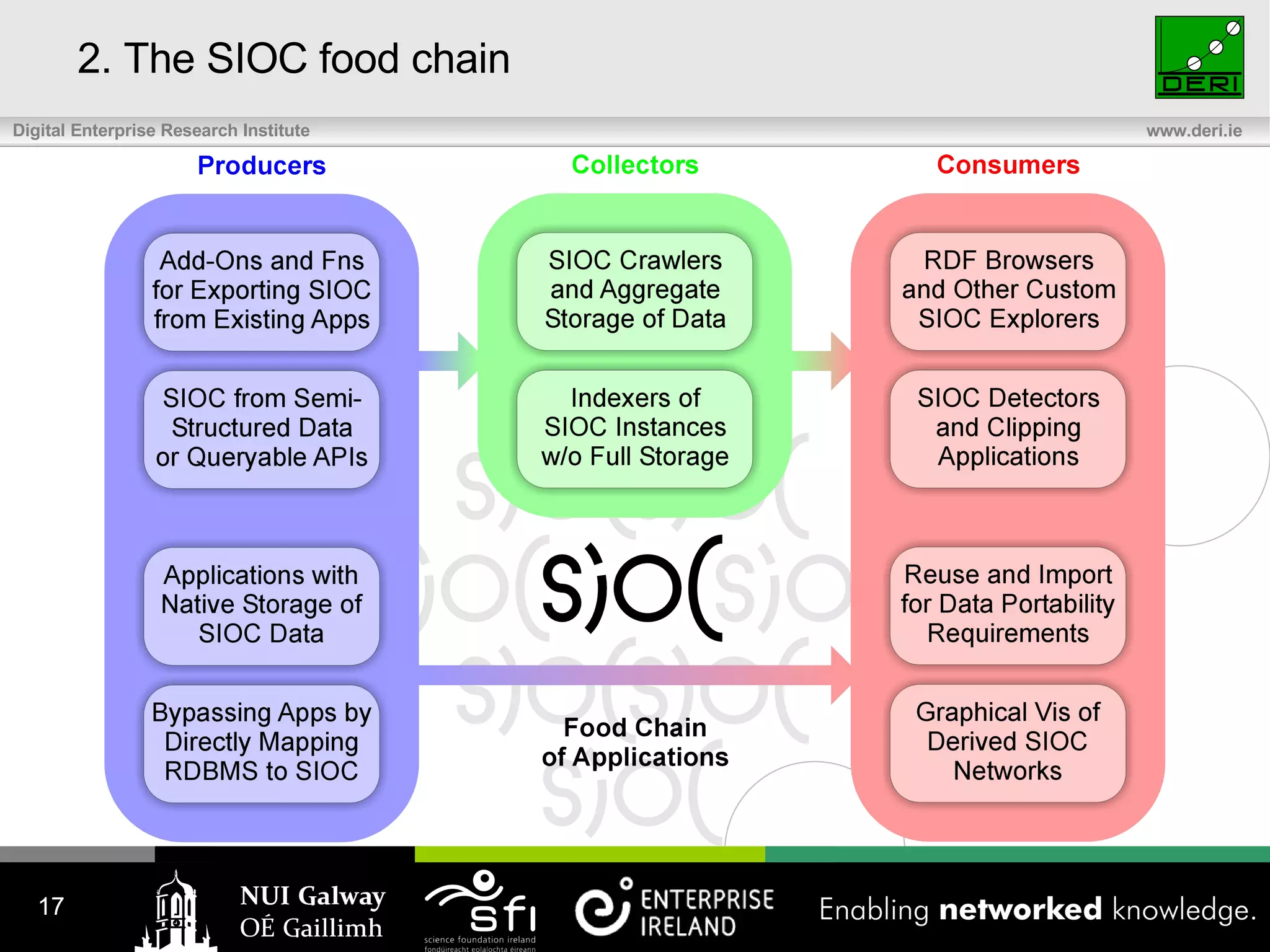
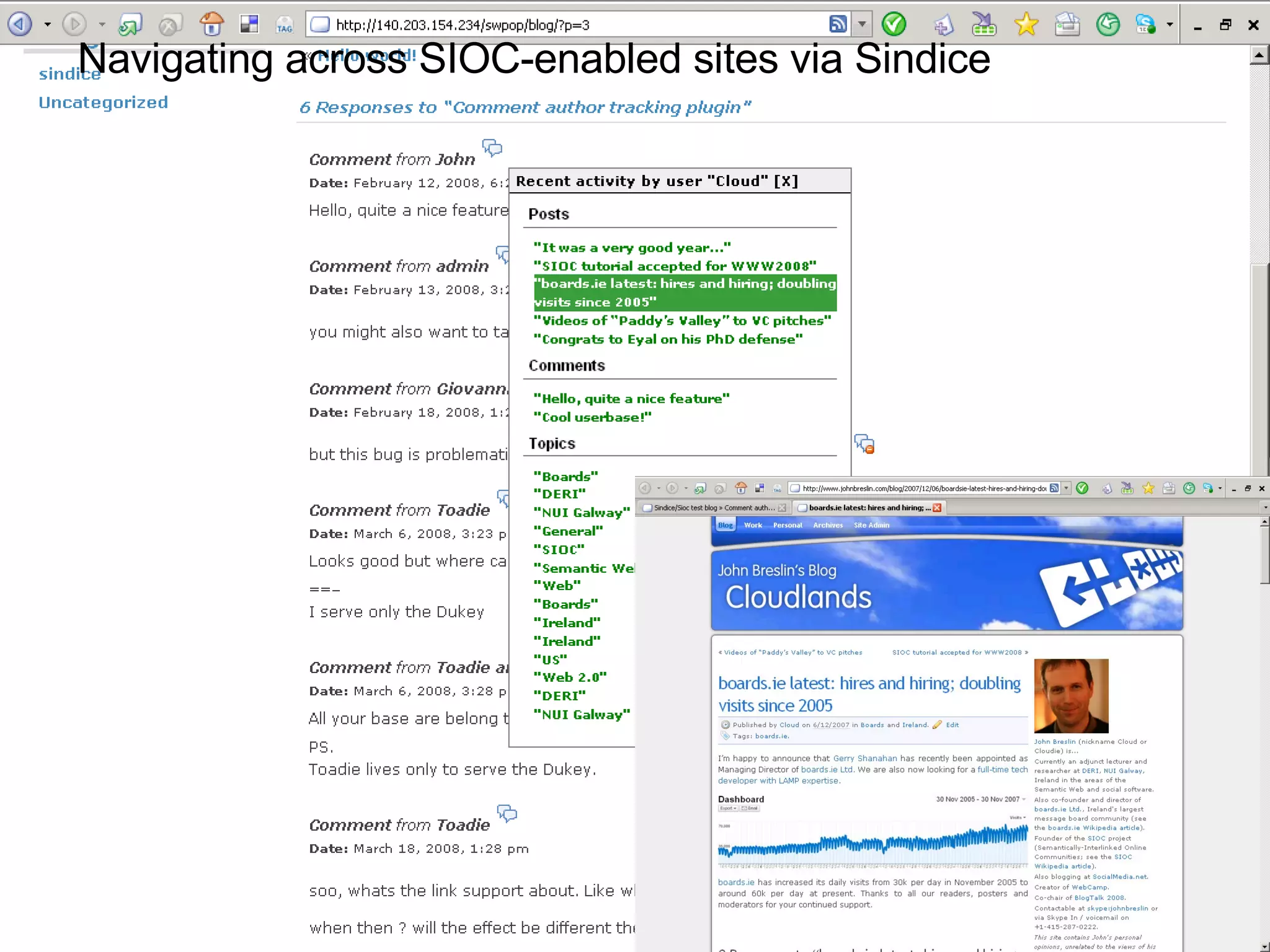

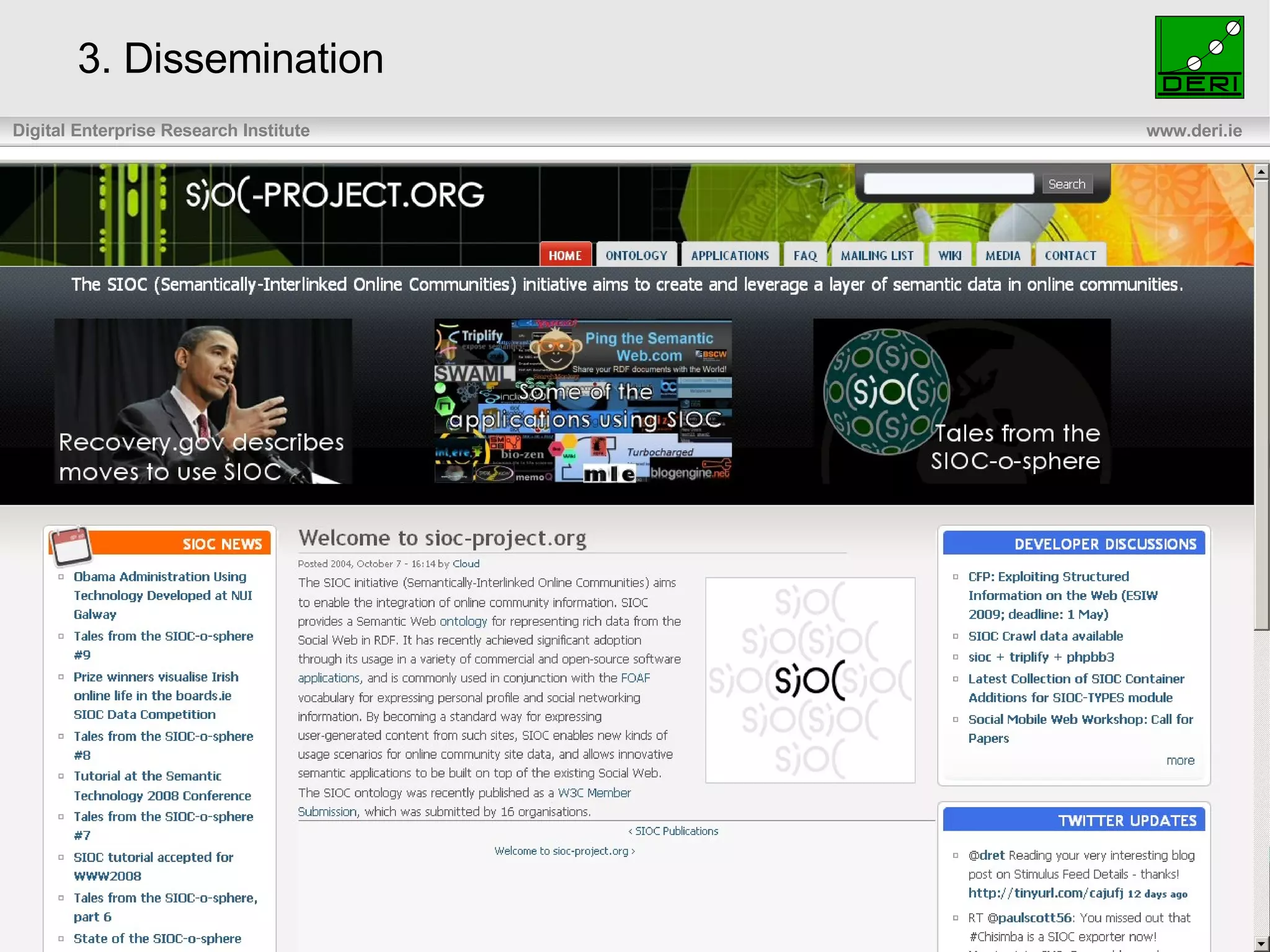
![Quotes about SIOC “ I […] think the concept is HOT” – Robert Douglass, Drupal Developer “ It just dawned on me that the burgeoning SIOC-o-sphere (online communities exporting and exposing content via SIOC Ontology) is actually: Blogosphere 2.0” – Kingsley Idehen, Founder and CEO of OpenLink Software “ SIOC has the potential to become one of the foundational vocabularies that make Semantic Web applications useful” – Ivan Herman, W3C / ERCIM “ FOAF represents relationships between people, as well as basic contact details. SIOC does this for groups: it extends the FOAF idea to being able to talk about whole groups of people. I am excited about SIOC because you can use that information to determine trust, to let people in.” – Tim Berners-Lee, Creator of the World Wide Web “ I think SIOC is the kind of data model we want that tracks the dollar instead of the person across disparate web sites” – George Thomas, Chief Architect, General Services Administration, US Government](https://image.slidesharecdn.com/20090423atullamoreengineersireland-090424055656-phpapp02/75/Enhancing-the-Web-Experience-21-2048.jpg)
